ERR_NETWORK_ACCESS_DENIED | 6 Ways to Fix It
Get Free Scanner and check your computer for errors
Fix It NowTo fix found issues, you have to purchase the full version of Combo Cleaner. Free trial available. Combo Cleaner is owned and operated by Rcs Lt, the parent company of PCRisk.com read more.
How to Fix ERR_NETWORK_ACCESS_DENIED Error in Google Chrome
ERR_NETWORK_ACCESS_DENIED is an error code you get on Google Chrome when you try to access a website. This article will provide more information about this error and provide you with ways to fix it.
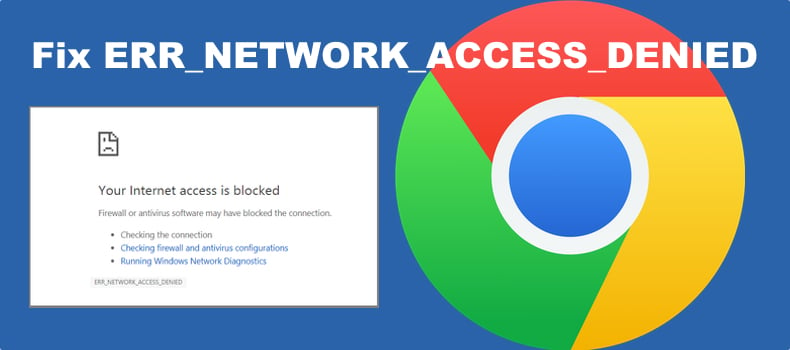
ERR_NETWORK_ACCESS_DENIED means that the website you’re trying to visit is denied or blocked by the network.
What Causes ERR_NETWORK_ACCESS_DENIED
- Corrupted Google Chrome cache. Your browser cache may have become corrupted over time and deny you from accessing a particular website.
- Third-party browser extension. An installed third-party browser extension may block you from accessing a particular website.
- Proxy server. If you have a proxy server set up, then anyone else accessing a website you’re trying to access at the same time may trigger this error.
- An unstable internet connection. An unstable Internet connection may cause a website to load longer than intended and trigger this error when the connection time runs out. Try power-cycling your Internet router and checking your Internet speed.
- Firewall, Anti-virus software, and VPN software. An installed third-party antivirus, firewall, or VPN program may block you from accessing a specific website, triggering the error. Try disabling your anti-virus, firewall, or VPN application and see if that fixes the problem.
Note: You can determine whether Google Chrome is at fault for this error by opening the same website that triggers ERR_NETWORK_ACCESS_DENIED in Chrome with another web browser such as Microsoft Edge.
Video Guide on How to Fix ERR_NETWORK_ACCESS_DENIED Error
Table of Contents:
- Introduction
- Method 1. Clear Google Chrome Browsing Data and Cache
- Method 2. Disable Third-Party Browser Extensions
- Method 3. Disable Proxy Server
- Method 4. Reset Google Chrome to Default Settings
- Method 5. Set Internet Options to Default
- Method 6. Restore Windows Defender Firewall Settings to Default
- Video Guide on How to Fix ERR_NETWORK_ACCESS_DENIED Error
Download Computer Malware Repair Tool
It is recommended to run a free scan with Combo Cleaner - a tool to detect viruses and malware on your device. You will need to purchase the full version to remove infections. Free trial available. Combo Cleaner is owned and operated by Rcs Lt, the parent company of PCRisk.com read more.
Method 1. Clear Google Chrome Browsing Data and Cache
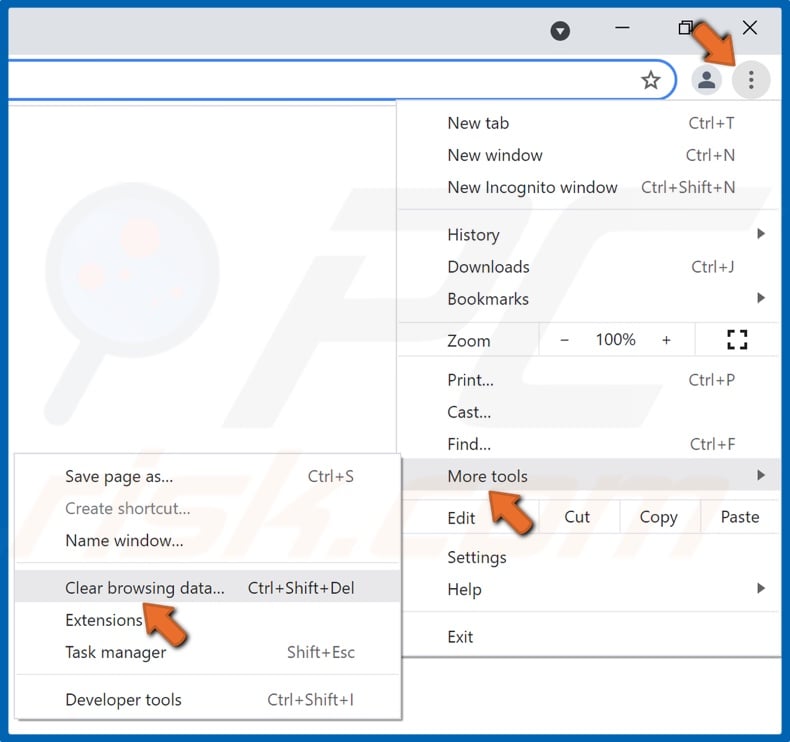
1. Launch Chrome and click the ellipsis at the top-right corner.
2. Select More tools, and click Clear browsing data.
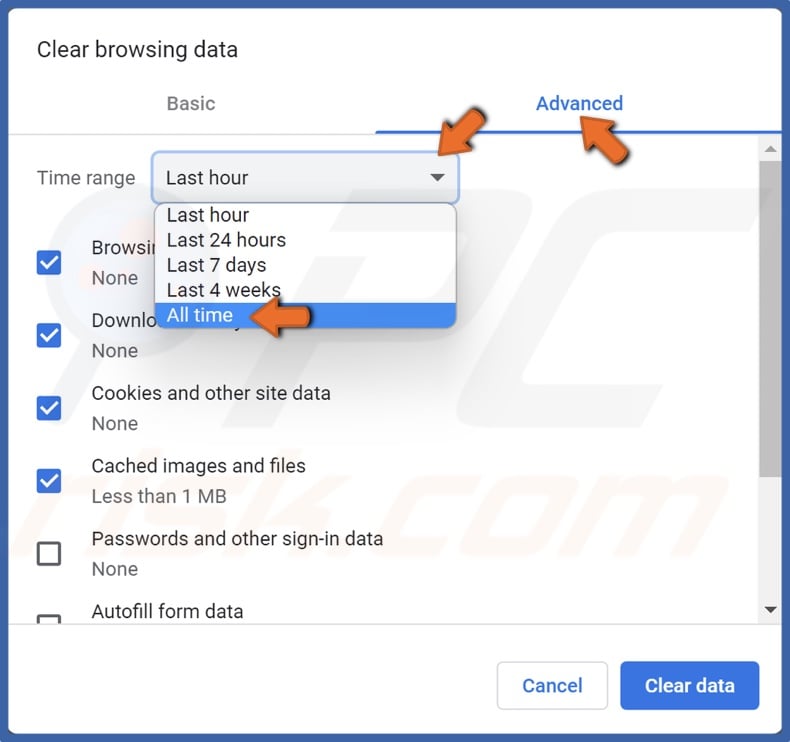
3. Select Advanced.
4. Then, open the Time range drop-down menu and select All time.

5. Tick the checkboxes next to Cookies and other site data, and Cached images and files.
6. Click Clear data.
Method 2. Disable Third-Party Browser Extensions
1. Launch Chrome and click the ellipsis at the top-right corner.
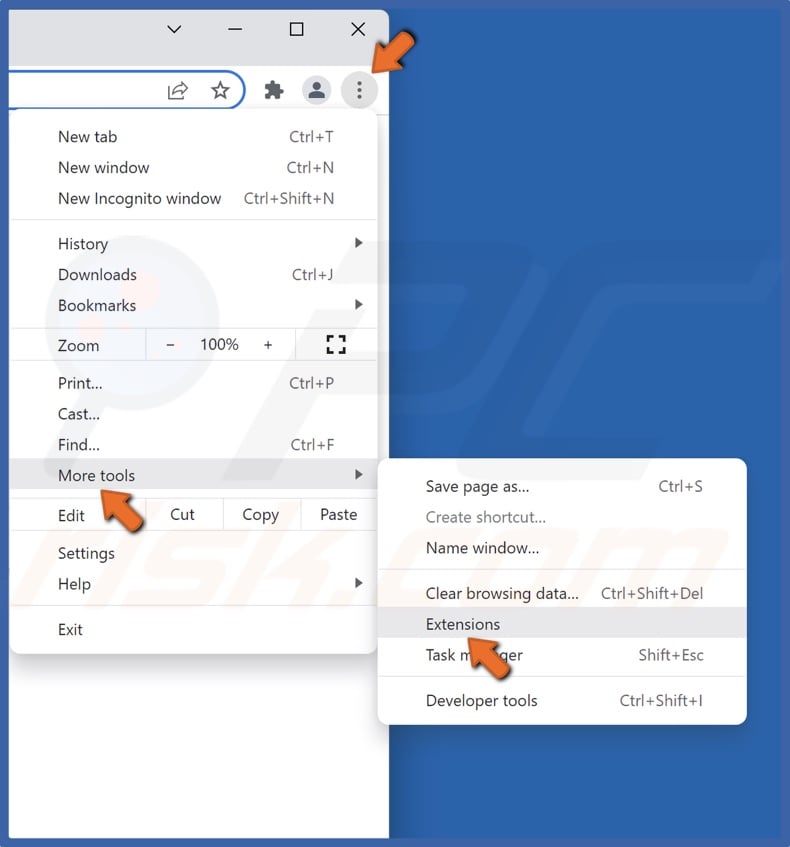
2. Select More tools and click Extensions.
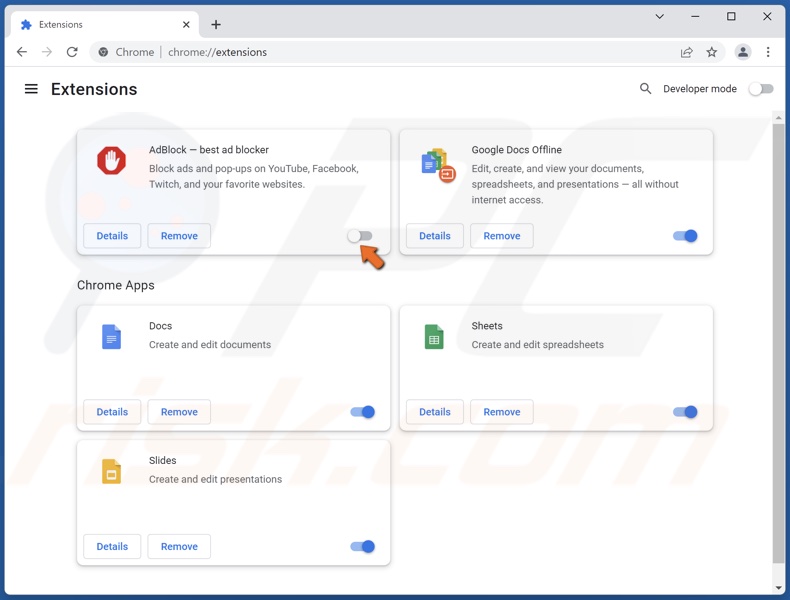
3. Toggle the slider next to the extension to disable it.
Method 3. Disable Proxy Server
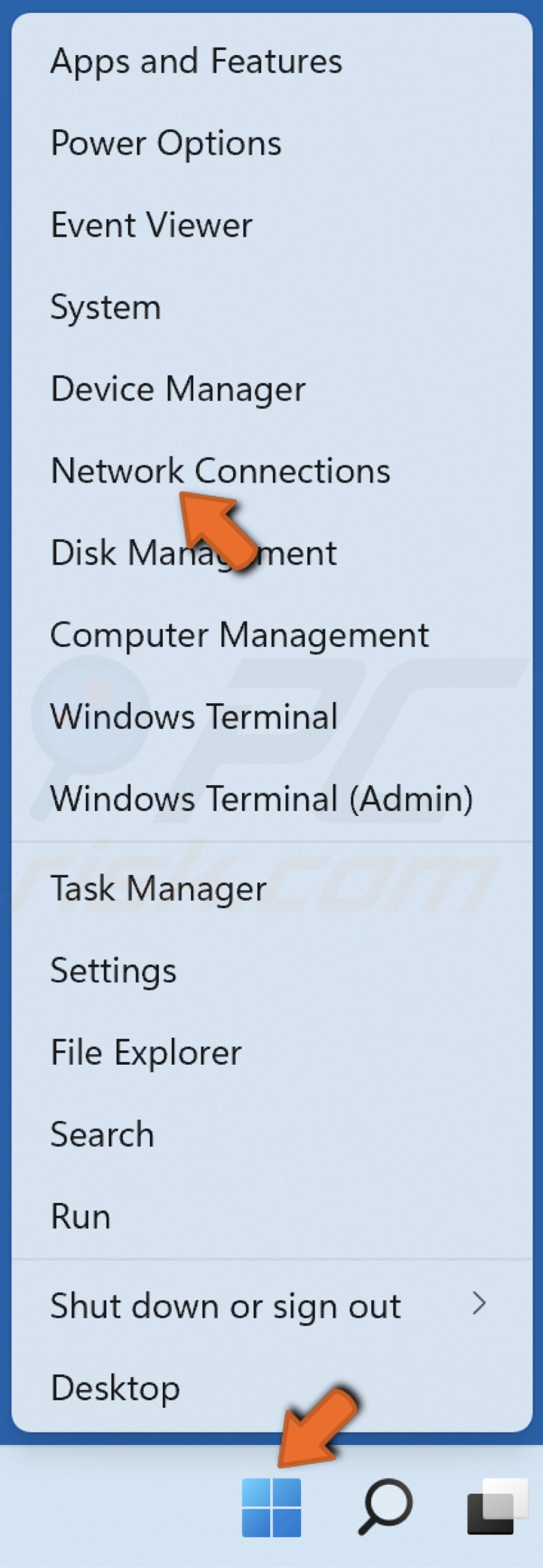
1. Right-click the Windows Start menu button and click Network Connections.

2. In the left pane, select Proxy.
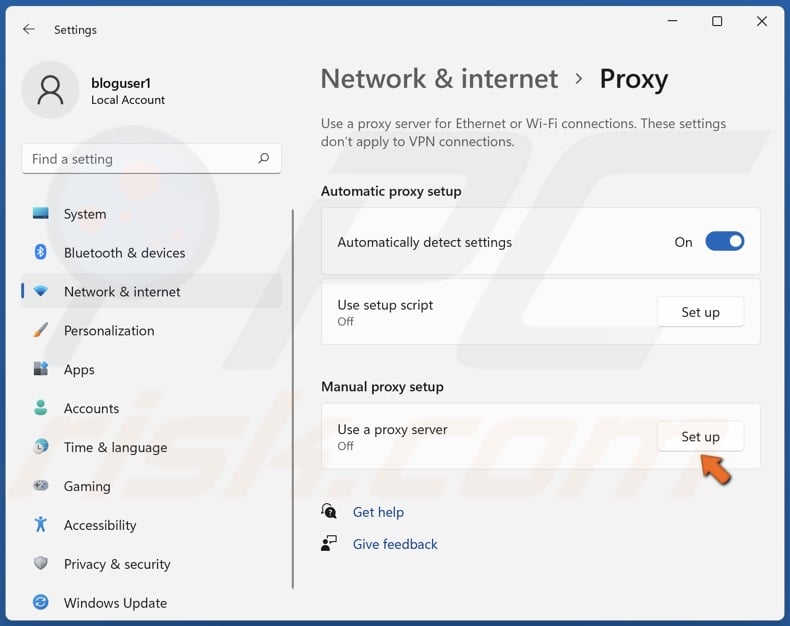
3. Click Edit next to the Use proxy server option.
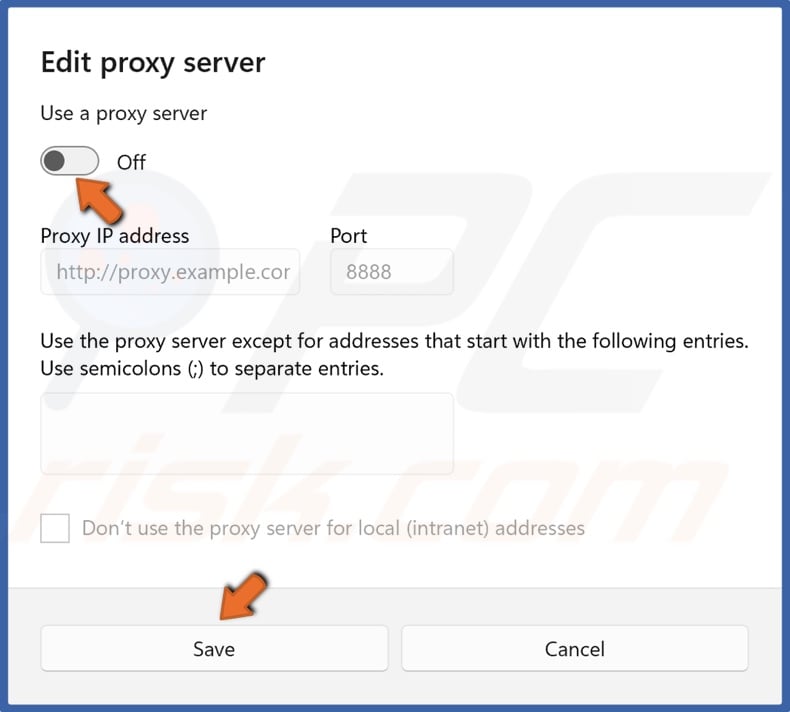
4. Toggle the slider to disable the proxy server and click Save.
Method 4. Reset Google Chrome to Default Settings
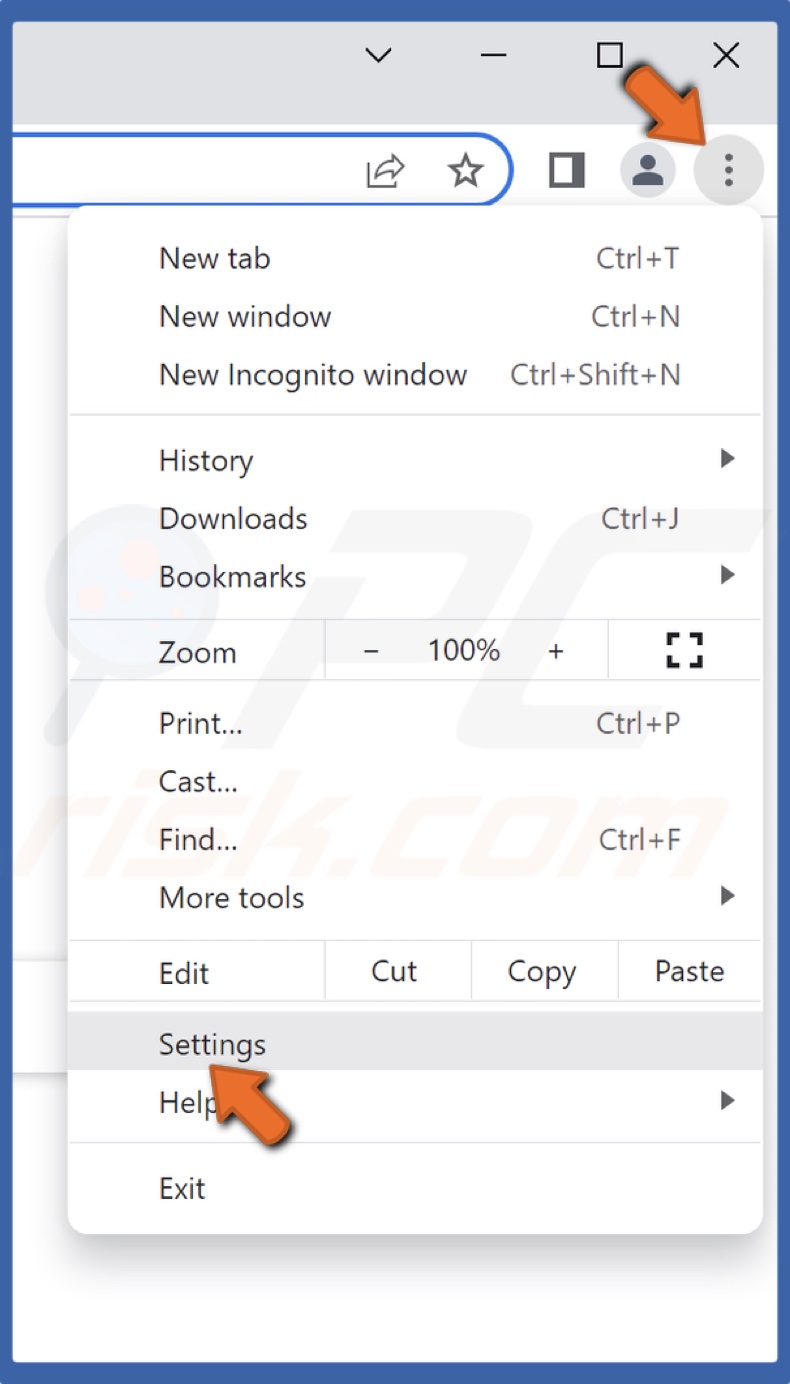
1. Launch Chrome and click the ellipsis at the top-right corner.
2. Click Settings.
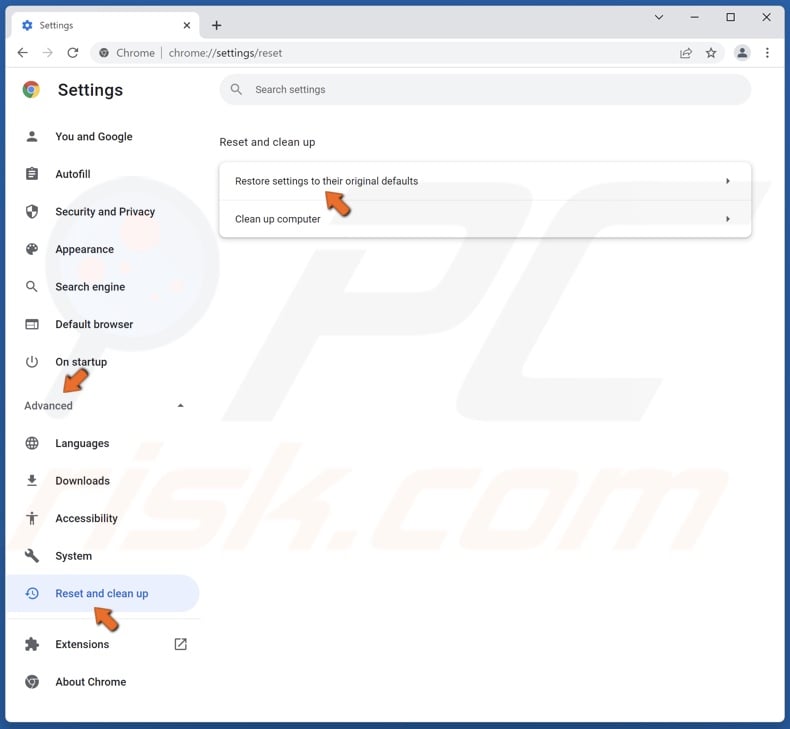
3. In the left pane, click Advanced and click Reset and cleanup.
4. Click Reset settings to their original defaults.
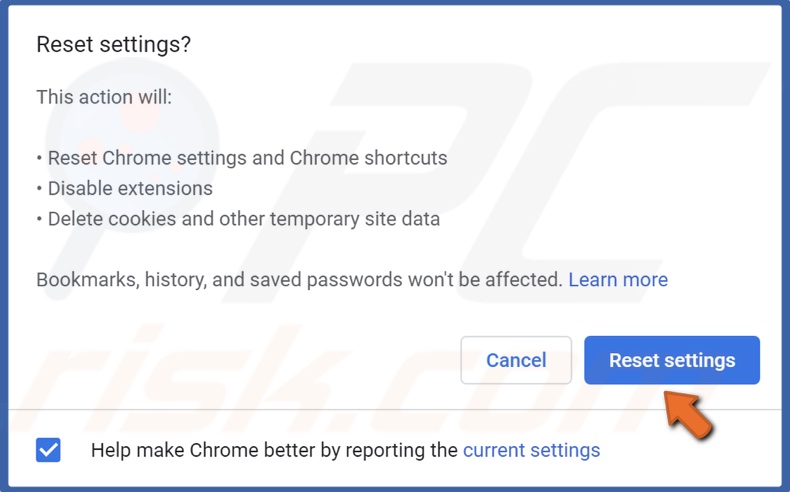
5. Click Reset settings.
Method 5. Set Internet Options to Default
1. Hold down Windows+R keys to open Run.
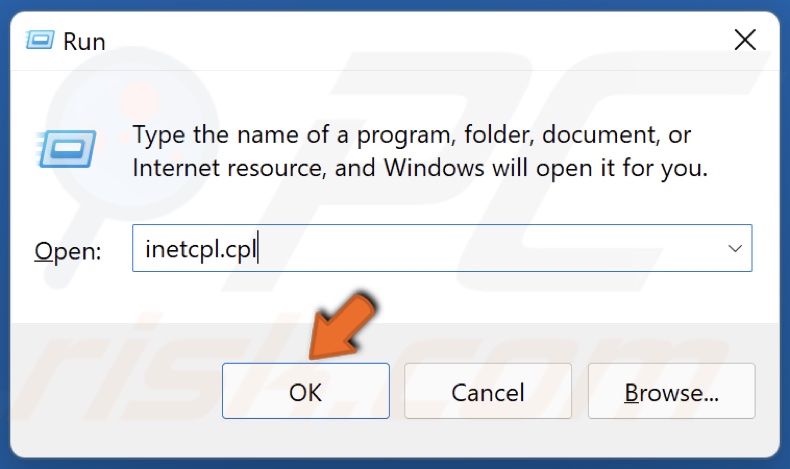
2. In the Run dialog box, type in inetcpl.cpl and click OK.
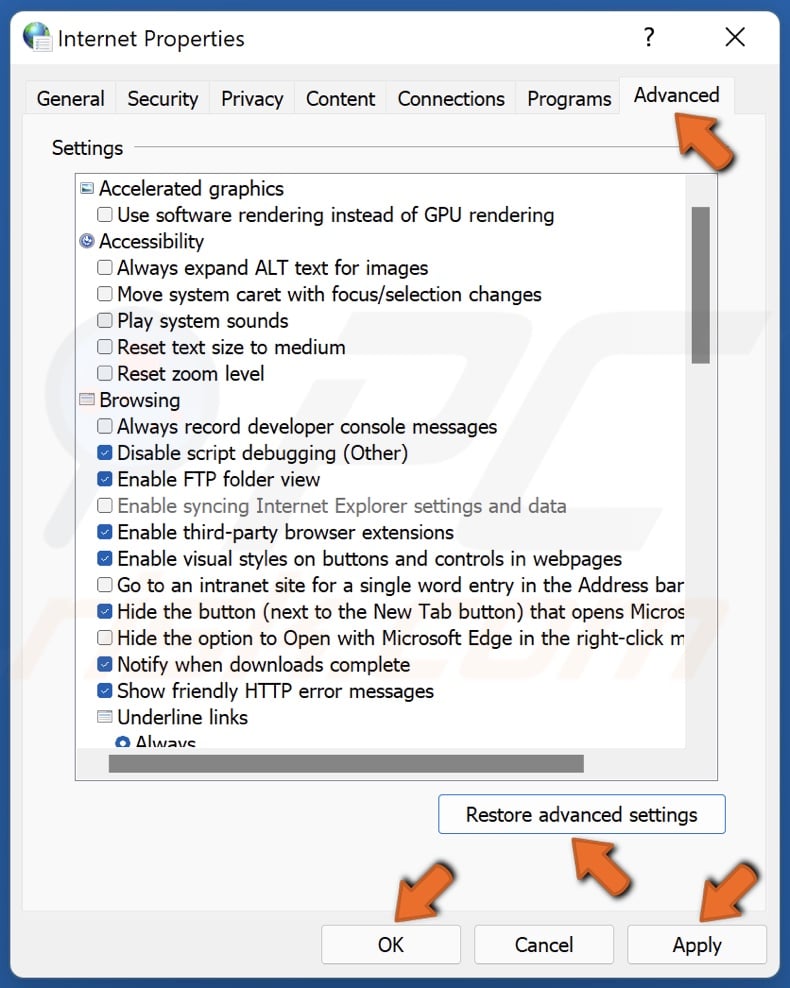
3. In the resulting Internet Properties window, select the Advanced tab.
4. Click Restore advanced settings.
5. Click Apply and click OK.
Method 6. Restore Windows Defender Firewall Settings to Default
1. Hold down Windows+R keys to open Run.
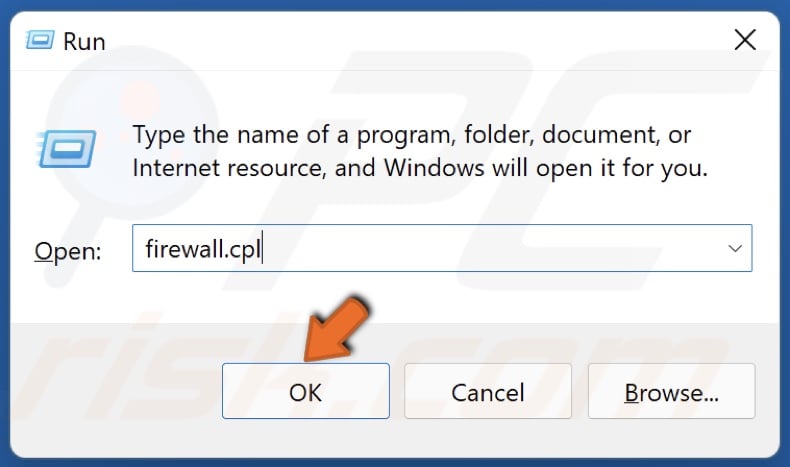
2. In the Run dialog box, type in firewall.cpl and click OK to open Windows Defender Firewall settings.
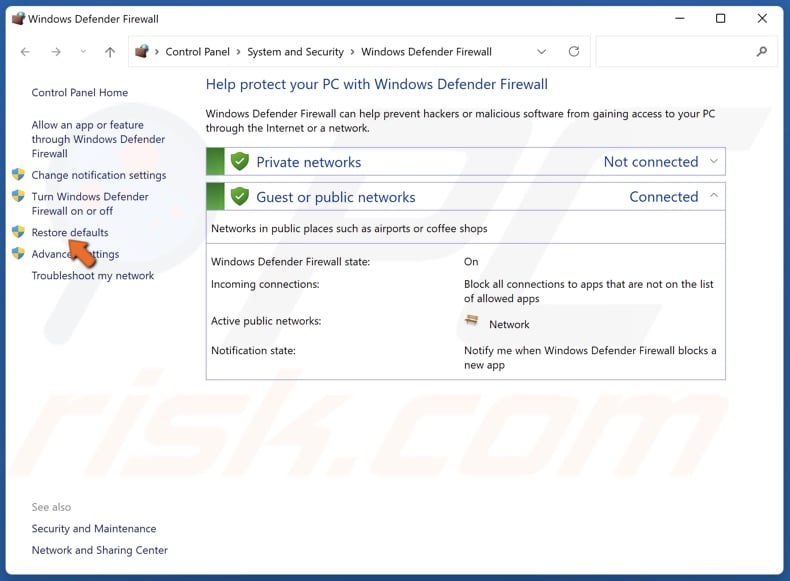
3. In the left pane, click Restore defaults.
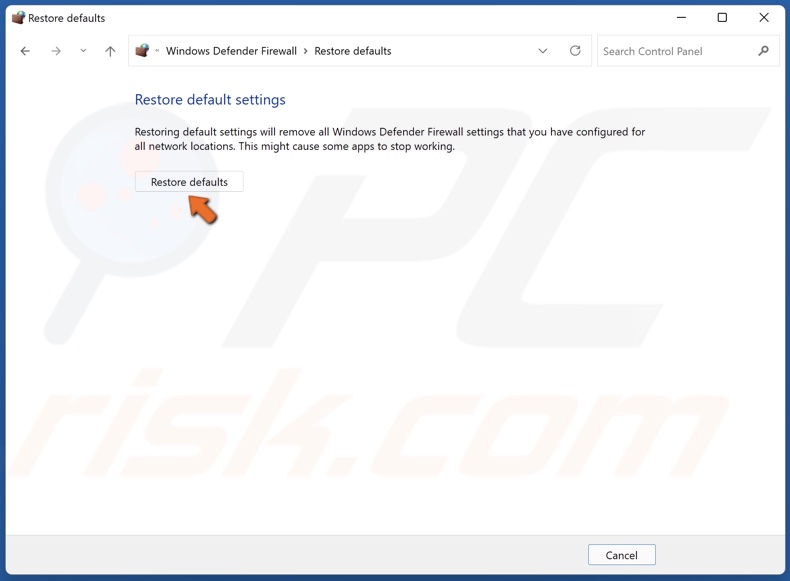
4. In the next window, click Restore defaults.
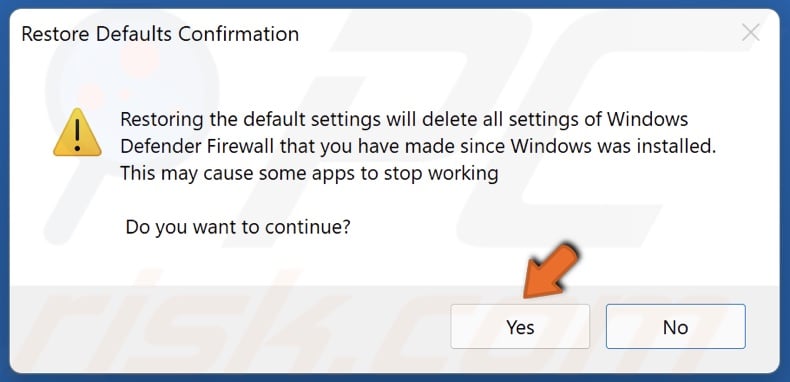
5. Click Yes to confirm the action.
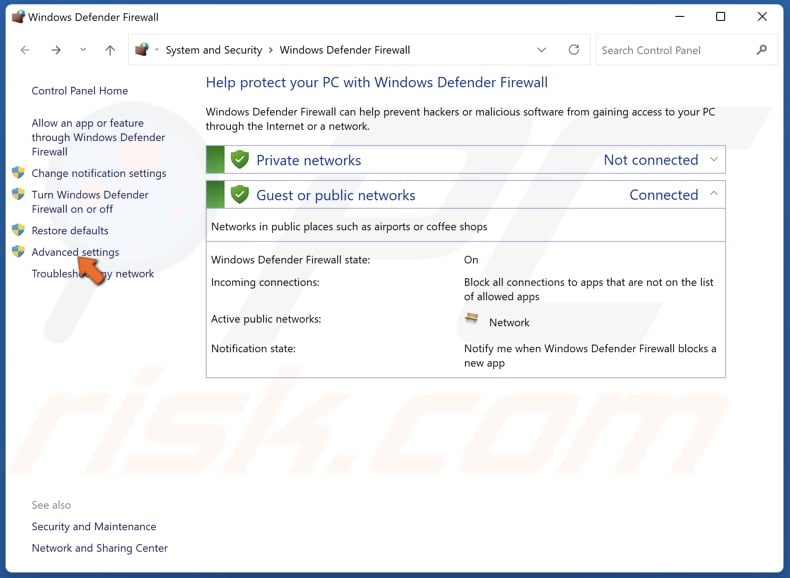
6. Click Advanced settings.

7. In the resulting Windows Defender Firewall window, click Restore Default Policy in the right pane.

8. Click Yes to confirm the action.
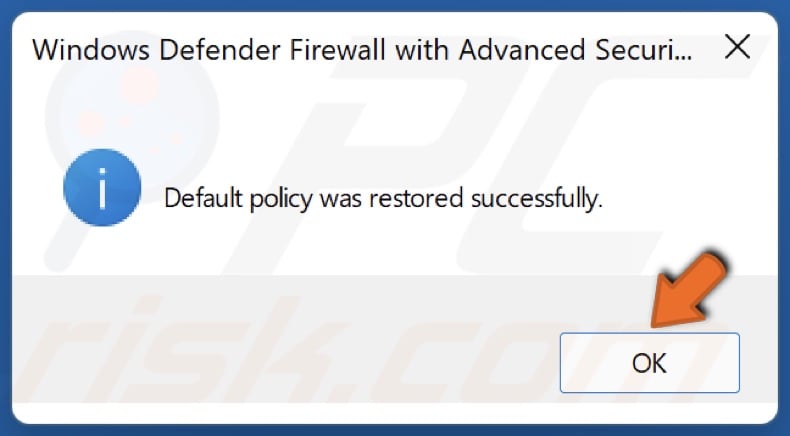
9. Click OK once the default policy has been restored.
Share:

Rimvydas Iliavicius
Researcher, author
Rimvydas is a researcher with over four years of experience in the cybersecurity industry. He attended Kaunas University of Technology and graduated with a Master's degree in Translation and Localization of Technical texts. His interests in computers and technology led him to become a versatile author in the IT industry. At PCrisk, he's responsible for writing in-depth how-to articles for Microsoft Windows.

▼ Show Discussion